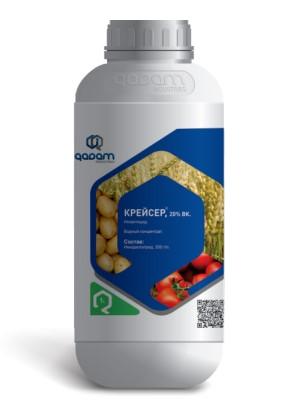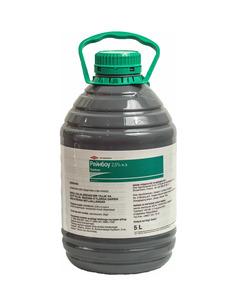- Home /
- Crop Protection /
- Торнадо 540

Торнадо 540
Advantages of the drug:
- ideal solution for desiccation, as well as for pre-sowing and pre-emergence treatment
- greater amount of active substance in the formulation form
- higher rate of action on the aerial parts of weeds compared to herbicides based on the isopropylamine salt of glyphosate acid
- complete destruction of almost all types of annual and perennial dicotyledonous and cereal weeds
- higher rain resistance compared to herbicides based on isopropylamine salt of glyphosate acid
- safety of use in crop rotation
Purpose:
continuous action systemic herbicide for the control of annual and perennial dicotyledonous and cereal weeds; Desiccant of grain crops.
Preparative form:
water solution.
Range of action:
all annual and perennial cereal and dicotyledonous weeds, including harmful species (creeping wheatgrass, field thistle, field bindweed, commonweed, pink bitterling, etc.).
Mechanism of action:
the drug penetrates plants through leaves and other green parts and is transported throughout all organs of the weed, reaching their root system. Blocks the synthesis of aromatic amino acids, which leads to damage to growth points and complete death of above-ground and underground organs.
Does not affect seeds.
Rate and symptoms of exposure:
depending on the activity of weed growth and weather conditions during the treatment period, visible symptoms of the herbicide effect on annual weeds become noticeable after about 5 days, on perennial weeds - 7 - 10 or more days after spraying. Complete death of the weeds occurs approximately 3 to 4 weeks after treatment.
Under unfavorable weather conditions (cold, drought, precipitation), the effect of the herbicide may slow down. Symptoms of exposure appear in the form of yellowing, then browning of plants, drying out of leaves. Later, the stems, underground shoots, roots and rhizomes die off.
Period of protective action:
the drug prevents the regrowth of perennial weeds from rhizomes or root shoots throughout the entire growing season or more, depending on the application rate, but does not suppress the germination of plants from seeds.
Possibility of resistance:
possible in some types of weeds (Amaranthaceae, wild radish, Canadian small petal, tripartite ragweed, artemisia ragweed, field bluegrass, chaff species, gumai, barnyard grass species) with prolonged use of the drug in the same place.
To avoid the emergence of resistance, you should alternate the use of herbicides with different mechanisms of action and cultivate crops in crop rotation.
Recommendations for use:
annual cereal weeds are most vulnerable at a height of more than 5 cm before emerging into the tube, perennial cereal weeds - with at least 5 - 6 leaves and a height of 10 - 20 cm, annual dicotyledons - from the stage of two leaves until flowering, perennial dicotyledons - in the phase rosettes before budding and flowering (thistle - in the rosette phase with a diameter of 10 - 20 cm, bitterling - in the rosette - stemming phase, bindweed - in the rosette phase 10 - 12 cm).
Working fluid consumption:
for ground spraying of vegetative weeds - 50 - 200 l/ha, for aviation - 25 - 50 l/ha. When carrying out desiccation, it is recommended to use 100 - 200 l/ha for ground treatment, and 50 - 100 l/ha for aviation.
Package:
10 liter canisters.
Manufacturer:
Avgust
Crop:
Non-agricultural land, Couples, Fields intended for sowing various agricultural crops
Product type:
Herbicides



